KABUL, Afghanistan -- On the outskirts of Kabul at a refugee camp, U.S. Army Chaplain (Lt. Col.) Eric Albertson holds a plastic bag filled with toys and school supplies.
He's shoulder to shoulder with sailors and airmen who've formed a gauntlet designed to keep oungsters from straying into a nearby area where blankets are being distributed to adults. Soon a shy, but curious girl about seven years old walks past the beaming servicemembers to Albertson. He bends down to give her a friendly greeting and gives her the bag. In turn, she gives him a trusting smile and scurries off to see what she has received.
Albertson and others make up Volunteer Community Relations (VCR), a command-directed outreach program that provides clothing, blankets, school and other supplies to Kabul's poor and displaced persons, and Afghan refugees who have come back to Afghanistan from Pakistan. On this day the VCR distributed 900 blankets and more than 500 bags filled with the toys and schools supplies to 300 needy families.
The two or three-acre patch where the camp is located is strewn with debris and overrun with raw sewage. According to Albertson, it's the only place that these Afghans can call home.
"Probably 50 percent of the people here are from the south where there was heavy fighting," he explained. "They literally left their homes and their property, and the only things that they brought with them were what they could carry. So they just migrated up north and once they got to Kabul where they thought it was safer, they settled in the camps. And some people are just simply the Kabul poor who just don't have anything."
Albertson has been on several similar missions throughout Kabul. Despite the dismal conditions in which the people live, he said what motivates him and VCR volunteers are the looks on children's faces when they receive something as simple as a colored pencil with construction paper or a small, fuzzy stuffed animal.
"Oh, yes! That's part of the attraction," Albertson said. "There's a huge waiting list for the number of people who want to go out, and the main reason they go is because of the children. Even for myself...one of the kids, maybe he was two or three years old, when he received his bag he just giggled. There was so much excitement. His whole demeanor just lit up, and that's the real attraction to the mission. But it's not just about the children. It's about the families, too. I remember on one of the missions a lady just broke down and cried. She was so happy to have some things for her family."
The VCR itself is comprised of mostly servicemembers who want to make a difference in Afghanistan. Albertson said the popularity of the VCR has doubled in the past few months, and service members gladly give up precious personal time to go on a mission if selected. One of the prerequisites for selection, he said, is helping to sort donated items that have been sent by U.S. churches, civic groups and individuals.
But the VCR isn't just limited to military members. Mixed in are government civilian employees and military members from other countries. And when the VCR heads out on a mission it's accompanied by military members who add additional protection.
"Because of the security concerns we have to make it a military operation," Albertson said. "Fifty percent of the people on a mission are providing security. And we work with the Afghan National Police who also provide security. But the individuals who help us with the distribution are a mixture. It's a joint operation so we have members from every branch of the service, and it's a multi-national operation so we have members from different countries who are serving over here. And there are civilians from the Army Corps of Engineers, other government agencies and contractors. They all pitch in to help."
Albertson said a first-time visit to a refugee camp is a huge dose of reality for some volunteers. For those who have not seen poverty up close he said it can resonate on a very deep level. "At the refugee camp it was cold, there was water from earlier rainfall, and a number of children were without shoes. There was mud and broken glass...that's just a difficult thing for anyone to see. But in some ways I think it's good to see it because it's real. It's different than watching a TV commercial soliciting money to help some child somewhere in the world."
Bob Van der Borg is a civilian who felt fortunate to go on the mission. Assigned to the U.S. Army Corps of Engineers' Afghanistan Engineer District-North, he looked at the refugees' plight not with despair, he said, but optimism.
"What surprised me was that in my job I find that one tribe will not associate with another when it comes to road-building contracts," Van der Borg said. "When a particular contract is in one tribe's area, for example, you hire the people from that tribe. In this refugee camp there are about six tribes living together trying to do the same thing which is escaping the realities set before them. But they all live together and they all face similar situations. Hopefully when they get out of this situation they won't go back as separate tribes, but they might actually go out and form a village."
The weather in Afghanistan continues to get colder which means a need for warm winter clothing at the camp. Albertson relies on the generosity of Americans to keep supplies coming, and the willingness of commanders to keep pushing the VCR program.
"This provides us for immediate distribution, so it's a testimony to the charity of the American people that they want to do this. And there's a tremendous amount of effort from the senior commander's command directive to maintain this relationship with the people. This is also a testimony to the love of the servicemembers and civilian volunteers here for the Afghan people and their commitment to help them."



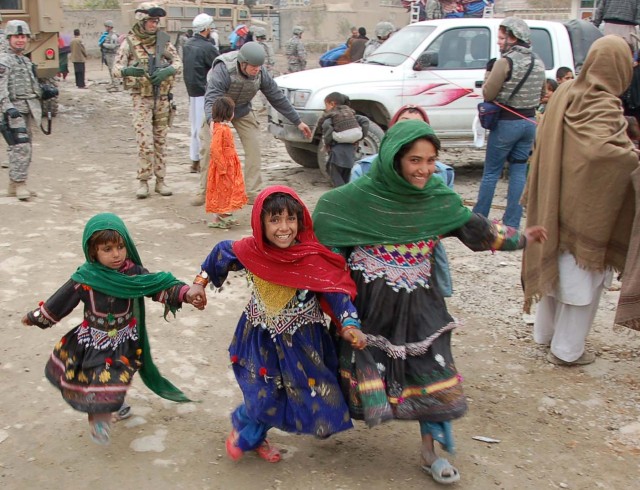
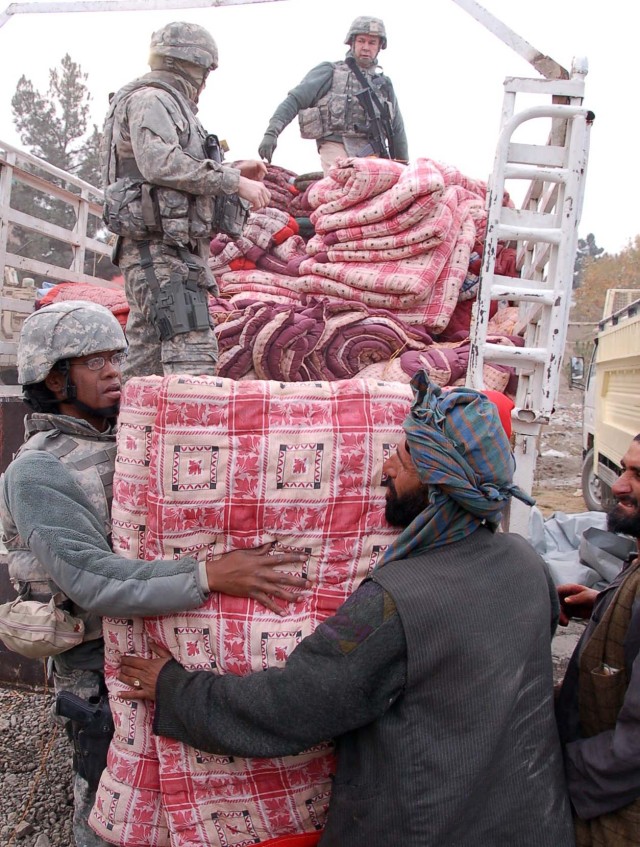
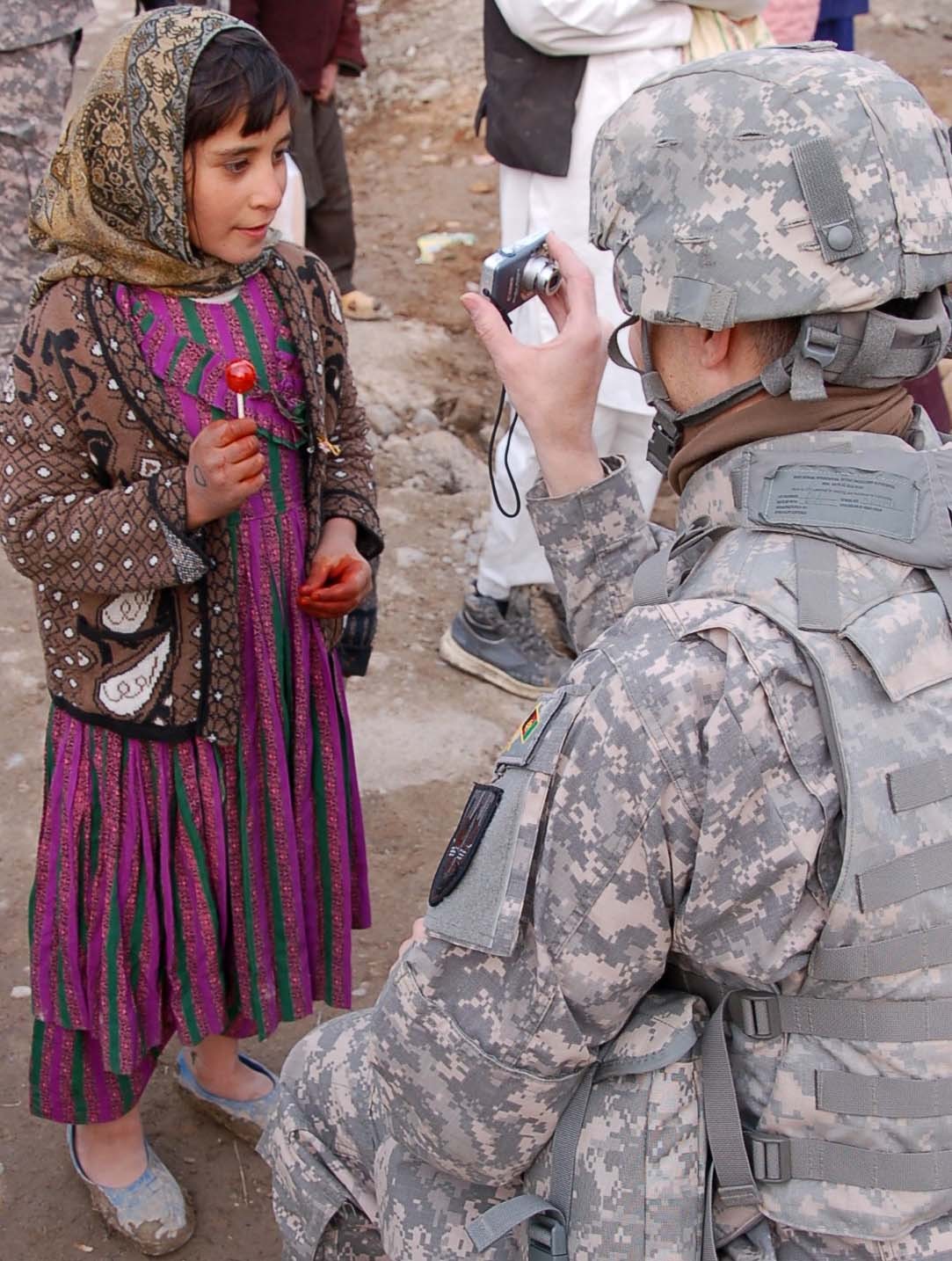
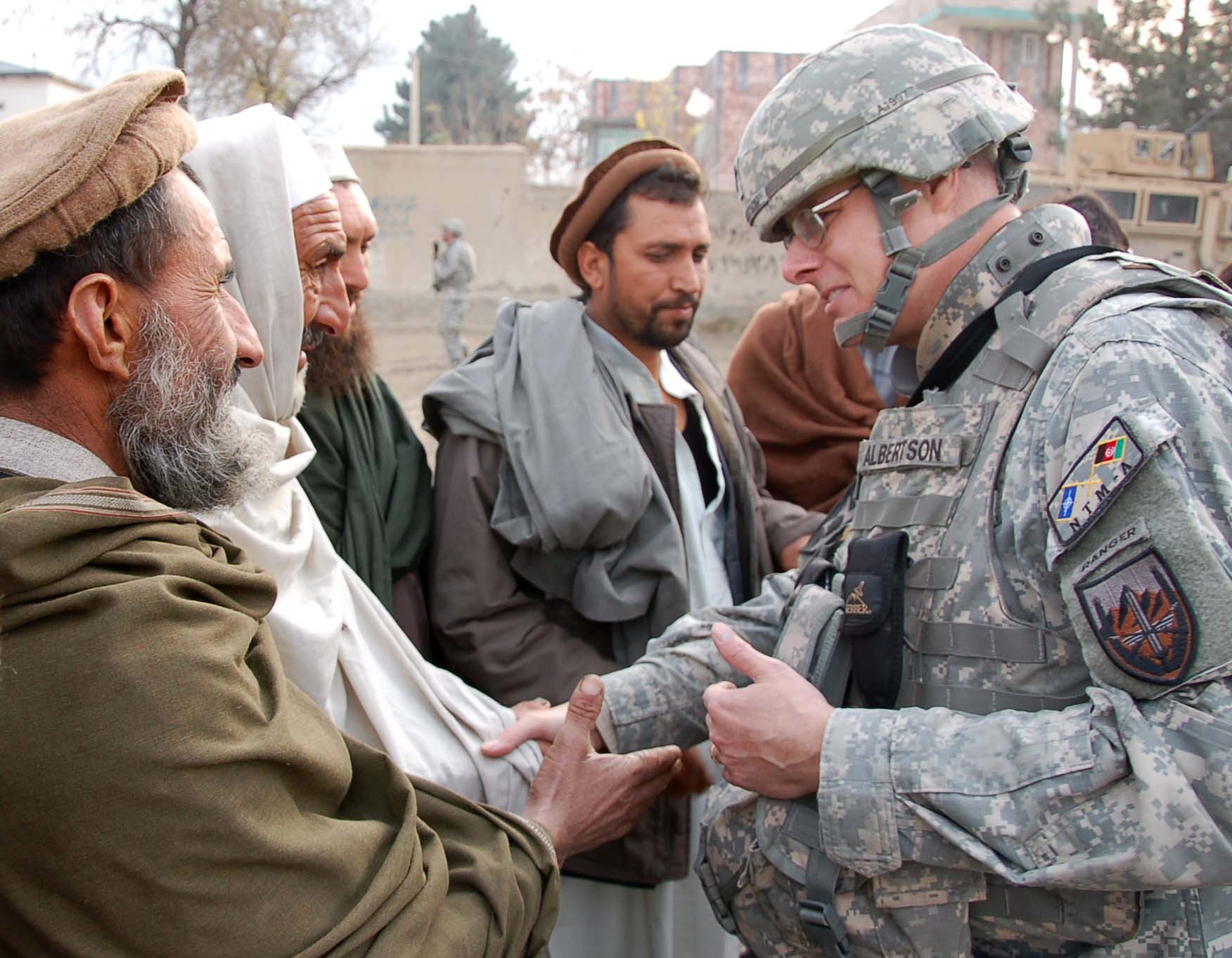

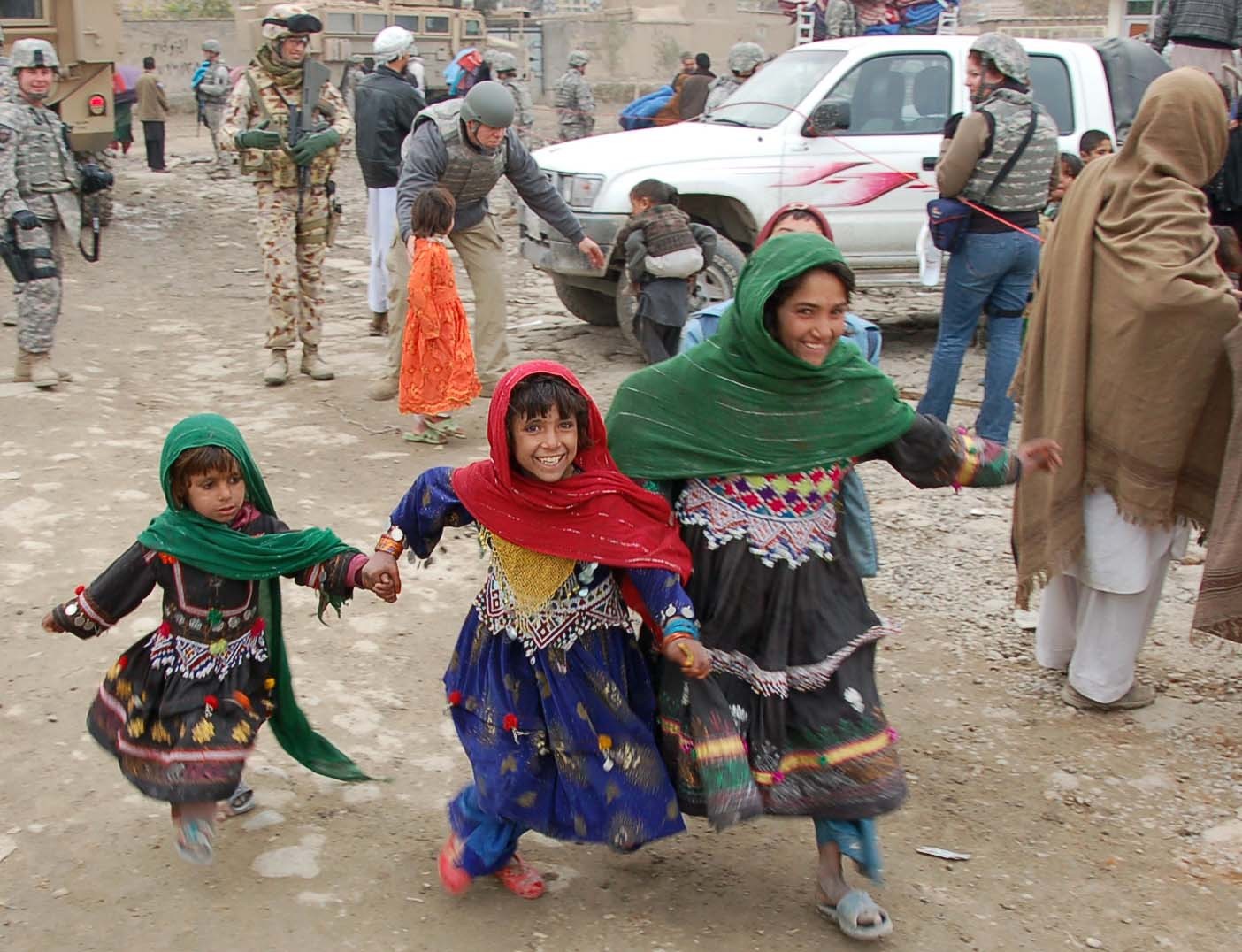
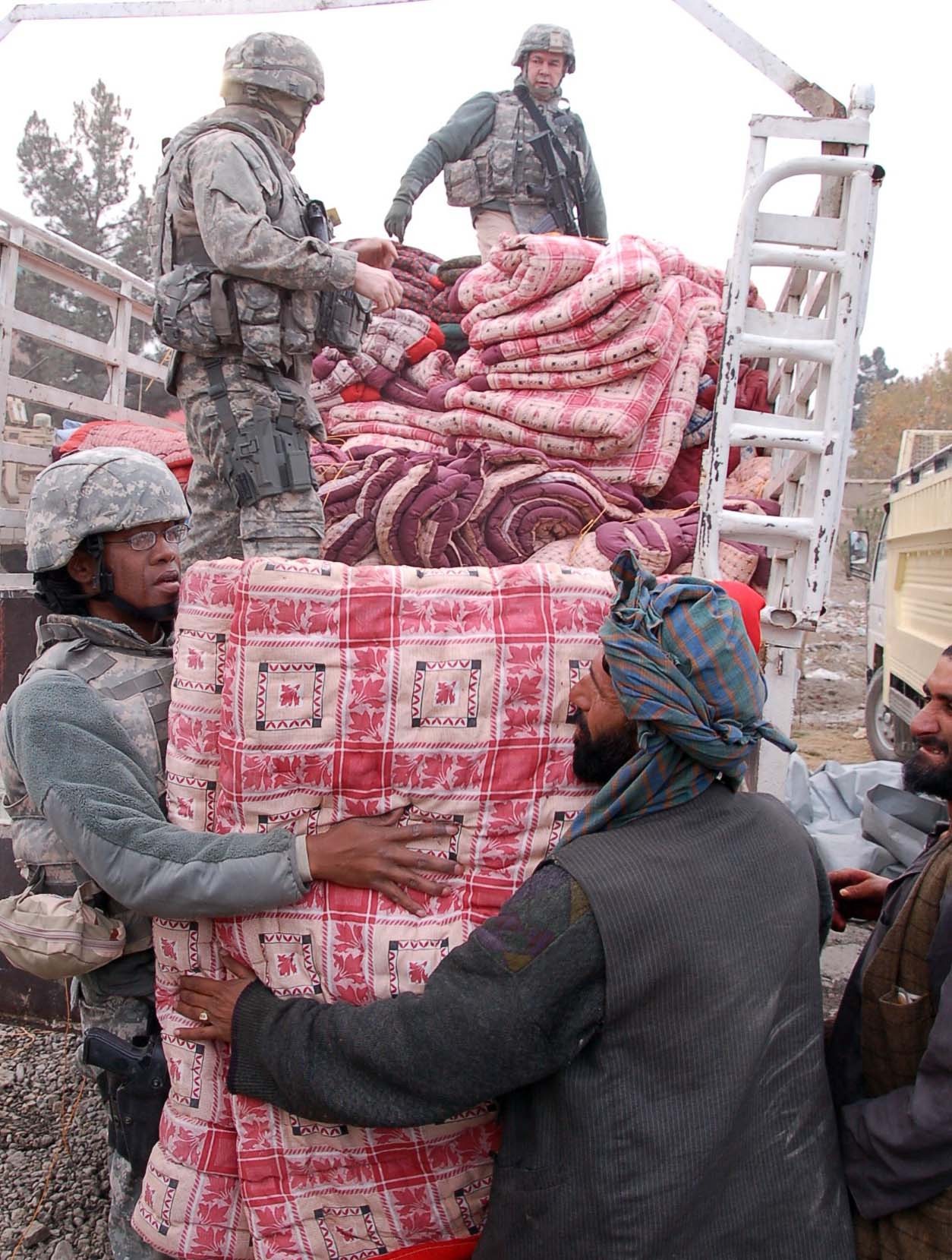
Social Sharing